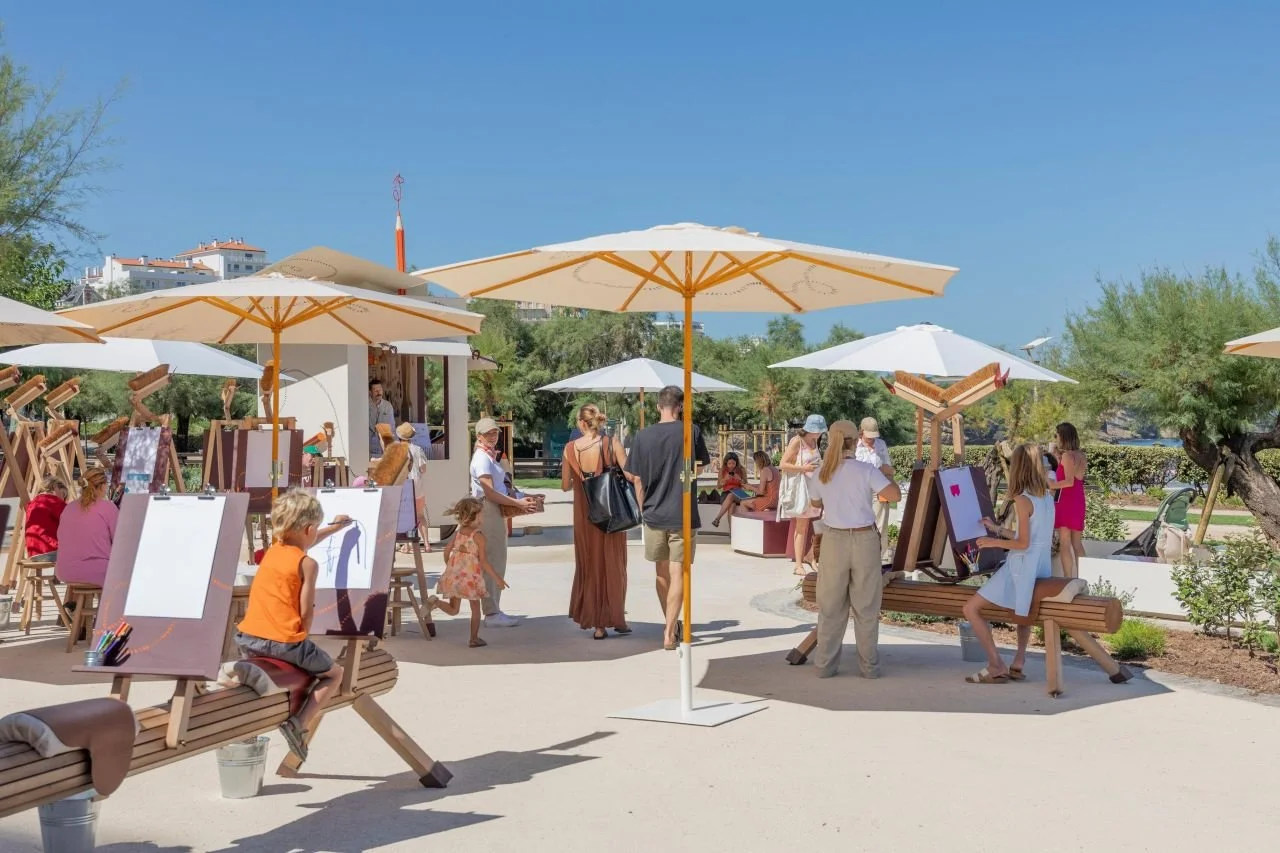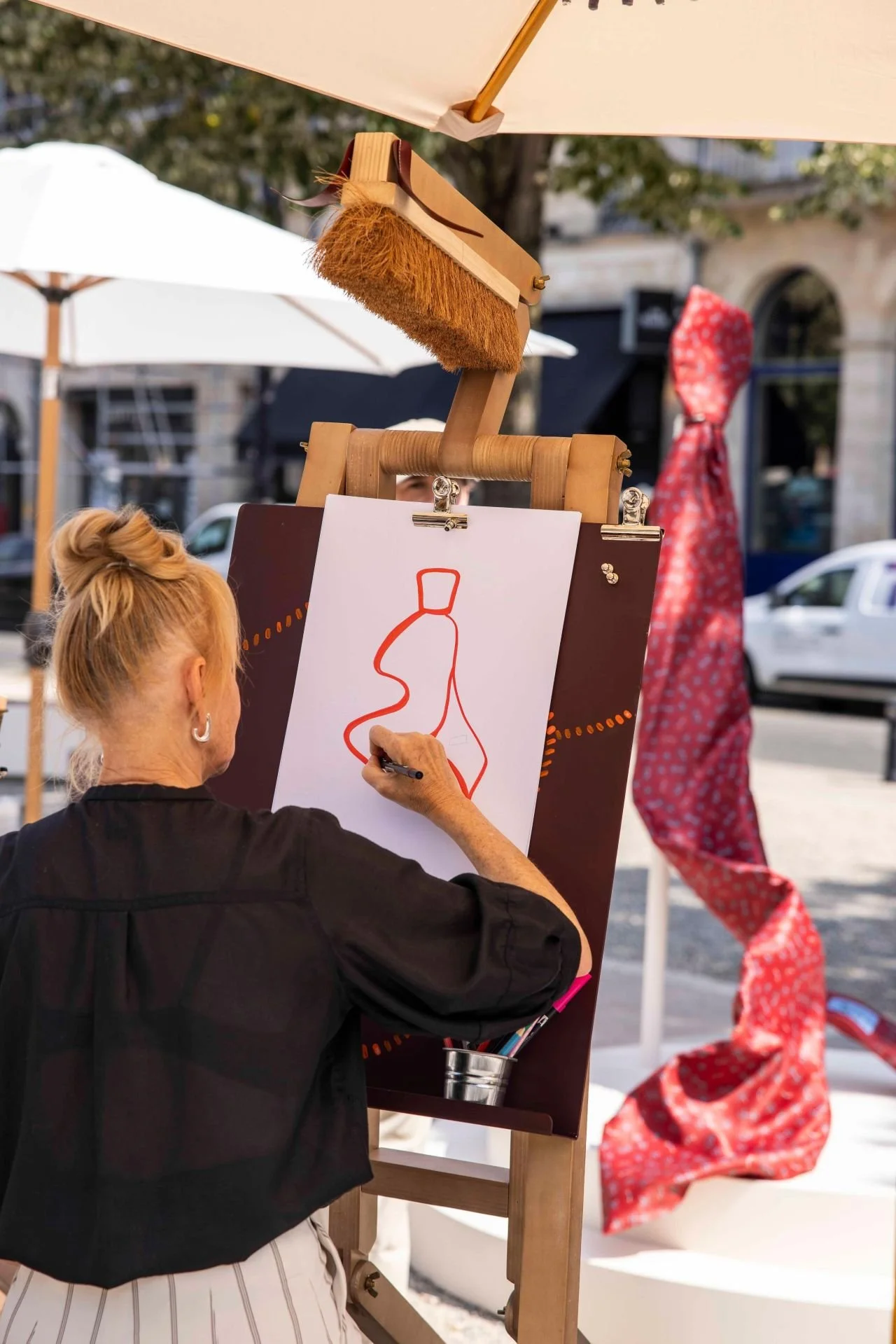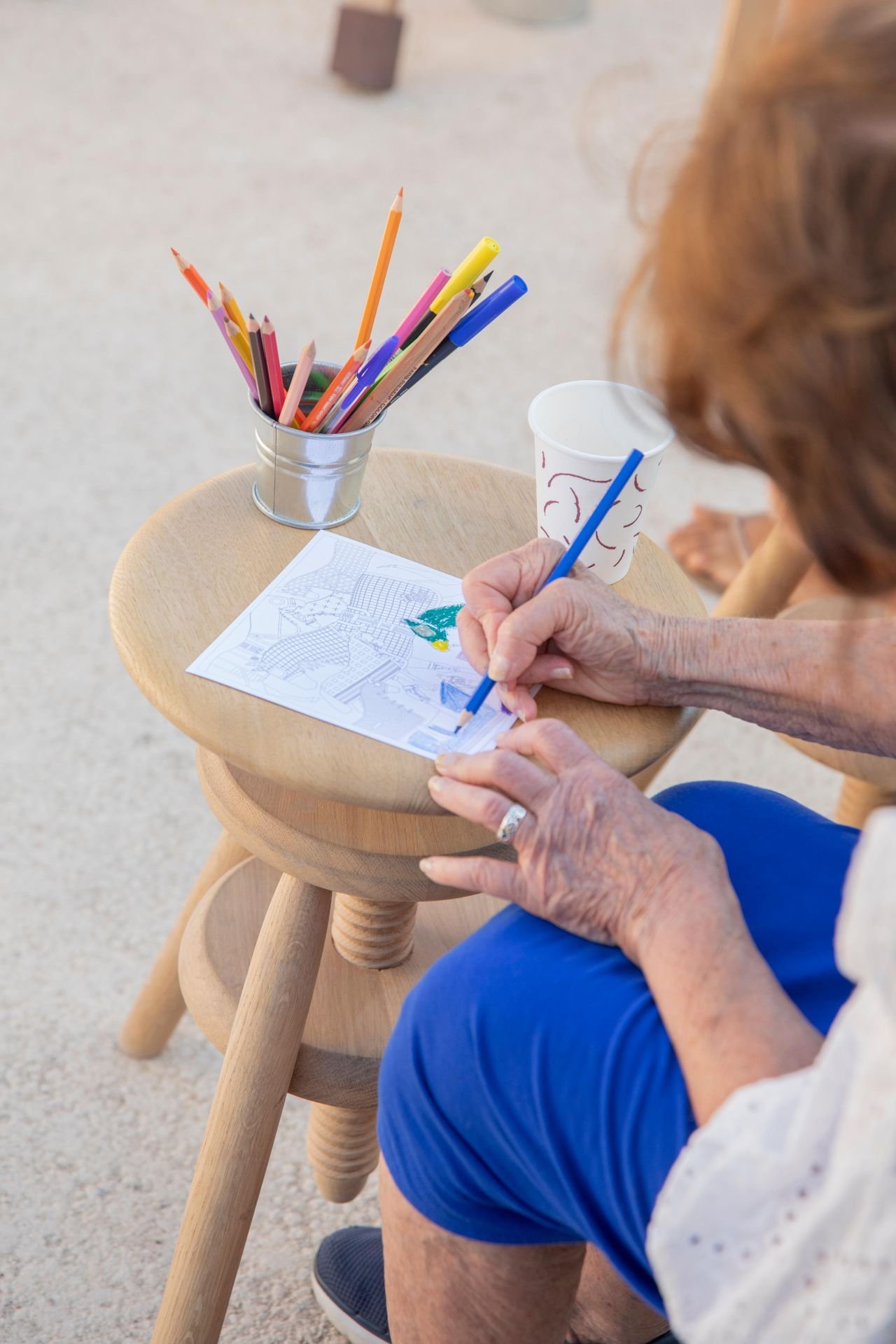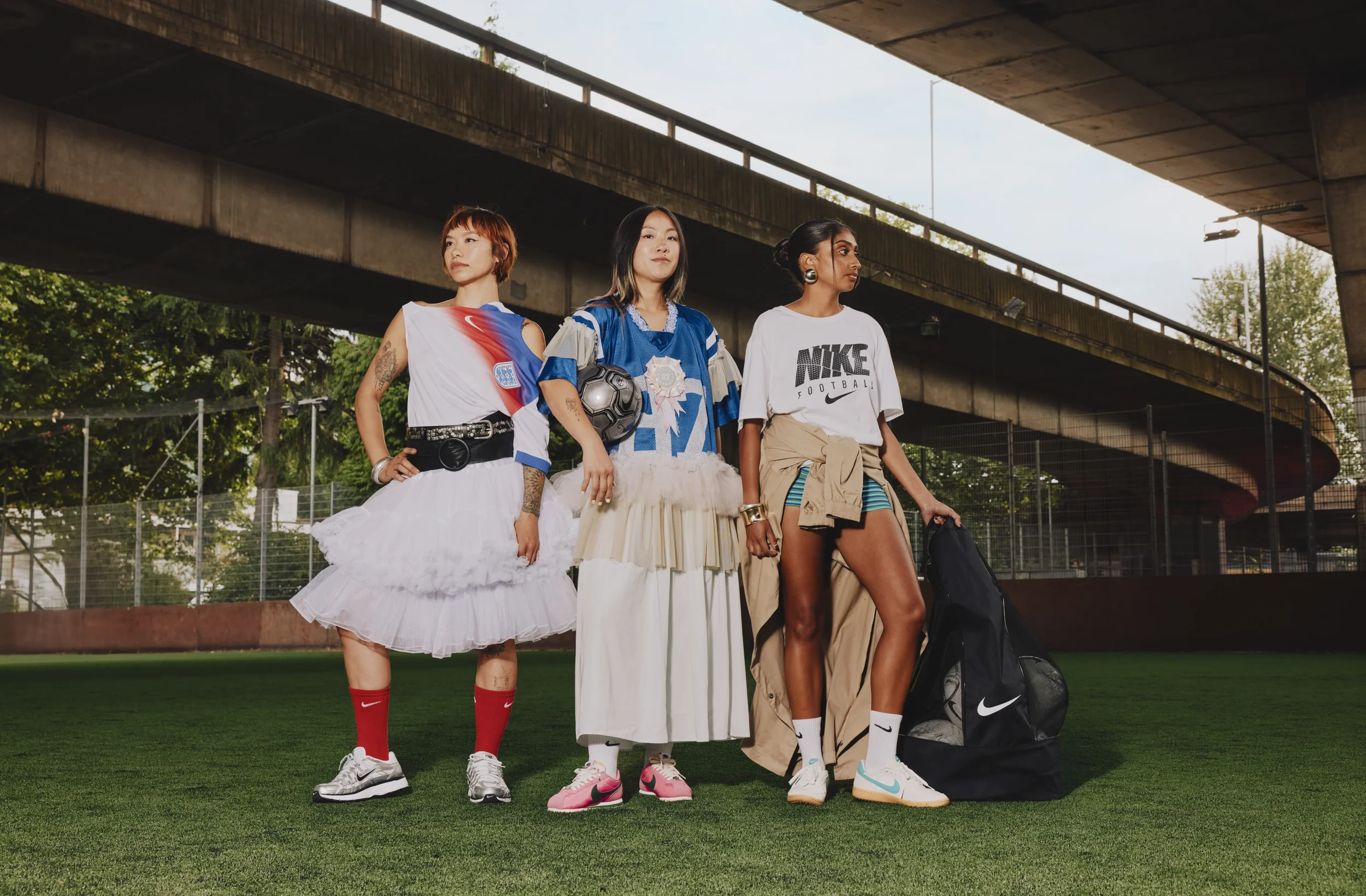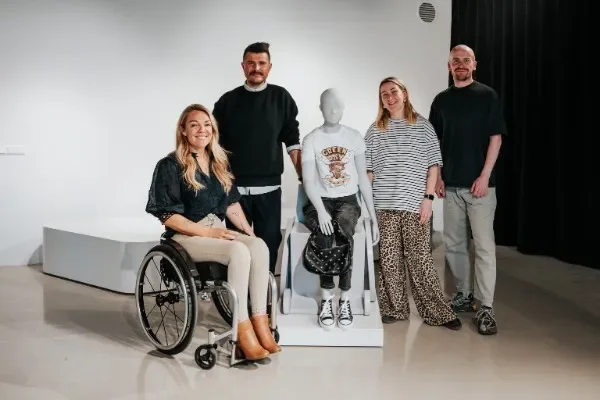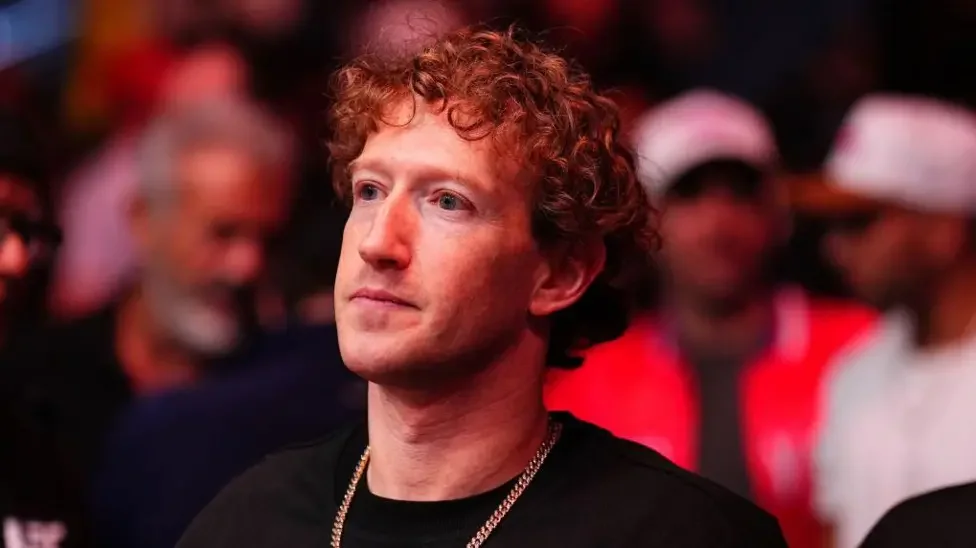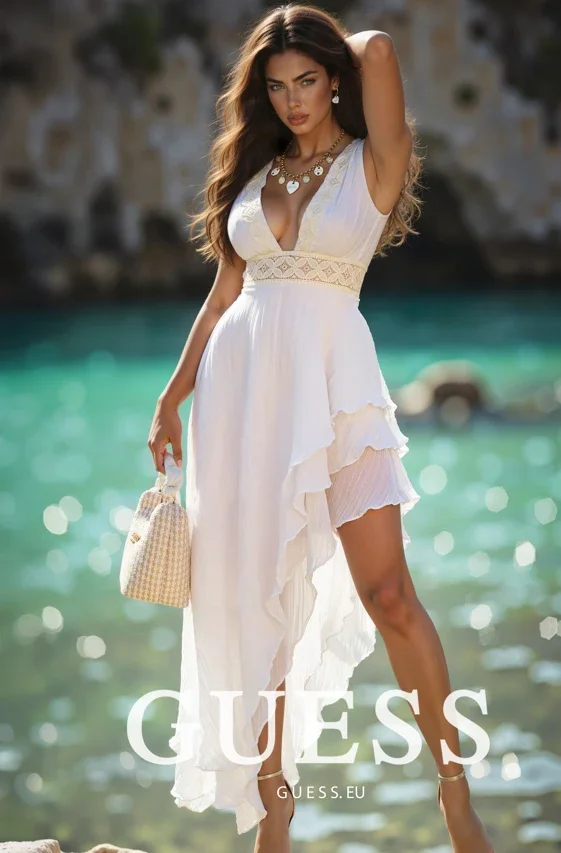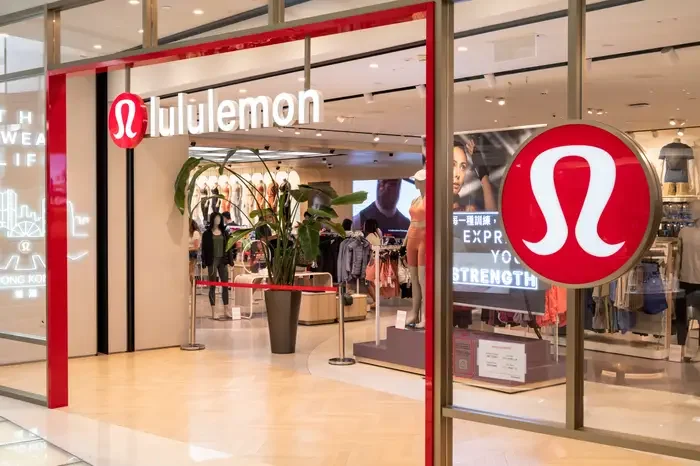🎭 Casting Beyond Convention: What Cynthia Erivo’s ‘Jesus Christ Superstar’ Role Signals for Brands
At the Hollywood Bowl, Jesus Christ Superstar shed its familiar skin. Cynthia Erivo’s portrayal of Jesus was arresting - vocally commanding yet layered with a striking vulnerability. Her phrasing made well-worn lyrics feel urgent and newly relevant, and her presence anchored the production in both gravitas and humanity.
Adam Lambert’s Judas was equally magnetic, his rock-inflected vocals biting yet emotive, lending the betrayal a modern edge. The chemistry between the two was palpable, turning their duets into high-voltage exchanges rather than static set pieces. The staging leaned into simplicity, letting the performances drive the drama – and the audience responded with powerful ovations.
Cast Overview
Cynthia Erivo (Jesus) - Tony and Grammy Award winner, two-time Oscar nominee, and soon to star in Wicked: For Good. Her performance brought a fearless reinterpretation to one of musical theatre’s most iconic roles.
Adam Lambert (Judas) - Known for American Idol and fronting Queen, Lambert delivered a vocally explosive and emotionally nuanced Judas.
Supporting Ensemble - A powerful chorus and tight band delivered Lloyd Webber’s rock score with muscular precision, amplifying the show’s rebellious spirit.
Why It Matters
This wasn’t simply a casting decision - it was a statement. By placing a Black queer woman at the centre of one of the most recognisable roles in musical theatre, the production challenged long-standing assumptions about who gets to embody sacred or historic figures. Lambert’s public defence of Erivo reframed the conversation from controversy to creative provocation.
For brands and cultural institutions, the lesson is clear: audiences are increasingly open to reinterpretations that prioritise inclusivity and fresh perspective. While backlash is inevitable when reimagining tradition, strong artistic vision and vocal allyship can turn potential criticism into cultural capital.
🎨 Hermès Brings Art to Life Through Drawing
This summer, Hermès has turned public spaces in France into open-air studios, inviting anyone and everyone to pick up a pencil and create. The Drawn to Craft initiative, part of a year-long celebration of drawing, landed in Bordeaux (3–5 July) and Biarritz (10–12 July) with a joyful, participatory tribute to the first spark of craftsmanship: the line.
Whether in the earliest sketch of a silk carré or the measured markings of a saddle stitch, drawing sits at the root of Hermès’ creative process. In these pop-up encounters, the brand brought that origin story outside, where passers-by could join in impromptu workshops. Children, locals, holidaymakers and seasoned artists alike experimented with collage, sketching, and playful interpretations of the house’s iconic motifs. Facilitators encouraged exploration without rules, making the act of drawing feel light, communal, and above all, accessible.
Earlier in the summer, Hermès launched the project in Paris with a one-night transformation of a school into a whimsical “drawing academy”. Guests, guided by eccentric “professors”, took part in classes before gathering for a celebratory “graduation” dinner. The concept blended Parisian elegance with a sense of theatre, reinforcing the idea that craft is as much about joy as it is about mastery.
Why it works
Cultural capital in motion - By taking craftsmanship into public spaces, Hermès shifts luxury from a rarefied context into a shared cultural moment, without losing its aura.
Invitation, not instruction - The emphasis is on participation rather than perfection, which draws in audiences who might otherwise be spectators.
Emotional brand storytelling - Drawing becomes a metaphor for starting something new, aligning with Hermès’ heritage of meticulous creation.
Cross-generational reach - Children and adults can engage equally, creating memories and associations that go beyond a single purchase.
Place-based authenticity - Anchoring the events in French cities reinforces Hermès’ local roots while supporting a global narrative of artistry.
In turning the act of drawing into an open invitation, Hermès not only demystifies its creative process but also builds a richer emotional connection with the public. Every line, whether from a child’s crayon or a master artisan’s pen, becomes part of the same story - one that starts with imagination and finds its way into craft.
💄🏉 Clinique Levels Up in Women’s Sport Sponsorship with the Red Roses
The link between beauty brands and women’s sport just took a high-profile leap. Clinique, part of The Estée Lauder Companies, has been named the first-ever Beauty Partner of England’s women’s rugby team, the Red Roses. This partnership will be front and centre during the Women’s Rugby World Cup kicking off on 22 August, marking a significant shift in how beauty aligns with sport culture.
Why it matters now
Women’s sport is seeing unprecedented growth in audiences, sponsorship value and cultural impact. According to the latest Women’s Sport Trust report (July 2025), brands that invest in women’s sport outperform traditional sponsors on emotional connection, brand affinity and long-term consumer loyalty. Clinique was ranked among the top performers, with over 70% of people aware of the partnership feeling more positive toward the brand.
This deal builds on Clinique’s grassroots programme GameFace, launched in 2022, which has funded clubs, supplied equipment and supported education for young women in rugby.
Pros - What’s working?
First-mover advantage: Clinique is the first beauty brand to partner with the Red Roses at an elite level, differentiating itself in a crowded skincare market.
Emotional brand lift: Strong data shows heightened affinity and trust among consumers who are aware of the partnership.
Grassroots to elite pipeline: The progression from GameFace to official Beauty Partner demonstrates brand commitment rather than a one-off marketing stunt.
Cons - Limitations or risks
Niche sport overlap: Rugby, while growing, is still a smaller audience compared to mainstream sports like football, potentially limiting mass exposure.
Perception gap: Not all audiences will connect beauty and rugby, risking accusations of a forced or mismatched brand alignment.
Short-term visibility window: Unless sustained post-World Cup, the halo effect may fade.
Opportunities - Where brands should focus
Content storytelling: Authentic narratives about player journeys, skincare routines, and confidence could extend impact beyond the tournament.
Cross-category campaigns: Leveraging beauty, sport, and lifestyle positioning to attract broader audiences.
Influencer-player collaborations: Co-creating content with athletes who resonate with beauty-savvy consumers.
Challenges - Barriers ahead
Maintaining authenticity: Audiences are sensitive to tokenistic sponsorships that lack tangible support.
Competition in women’s sport: With Unilever and Coppertone also making rugby moves, Clinique will need to keep its positioning distinct.
Long-term ROI measurement: Tying sponsorship impact directly to product sales remains complex.
Key takeouts
Clinique is setting a precedent by merging beauty with elite women’s rugby in a way that builds on authentic grassroots work.
Emotional brand affinity is a proven outcome for brands investing in women’s sport.
Sustaining momentum after major tournaments will be critical for lasting impact.
Next steps for brand marketers
Think beyond logo placement: Develop integrated campaigns that blend cultural storytelling, product relevance and player advocacy.
Bridge grassroots and elite: Show a clear pathway from community support to national stage.
Measure sentiment shifts: Track not just reach but changes in perception and brand trust over time.
Plan post-event activation: Ensure the brand narrative lives on after the final whistle.
Celebrating Inclusivity & Creativity: schuh × Nike × Baes FC
This schuh‑Nike collaboration spotlighting Baes FC is not just product marketing; it’s a cultural statement. By championing an East London grassroots club created for women, trans and non‑binary people of Asian heritage, the campaign amplifies inclusion, creative identity and belonging through purposeful style and sport.
Supporting Statistics
Registered women’s and girls’ teams in England have doubled - from approximately 5,632 in 2016‑17 to over 12,150 in the 2023‑24 season.
Between 2020 and 2024, women and girls football participation in England rose by 56 per cent; female coaches and referees increased by 88 per cent and 113 per cent respectively.
Yet only 26 per cent of Premier League spectators are women, and 11.1 per cent of board positions at Premier League clubs are held by women, well below FTSE 100 averages.
Pros
Authentic alignment: schuh, Nike and Baes FC share a clear purpose around creating safe, inclusive spaces driven by intersectional community values.
Role‑modelling inclusive leadership: Baes FC, founded in 2022 by Nicole Chui, offers sport as platform—turning a pitch into sisterhood and visibility into belonging.
Style with substance: Featuring Nike’s P‑6000, Cortez and Field General silhouettes, the collection blends Y2K or retro sport aesthetics with community energy, enabling personal expression beyond performance.
Cons
Commercial limitations: While inclusion is central, the campaign still hinges on sneaker sales; the message may risk being overshadowed if storytelling feels tokenistic or purely aesthetic.
Broader systemic barriers remain: Grassroots growth is strong but gender‑based discrimination rose 62 per cent from the 2022/23 to 2023/24 grassroots season, indicating deep-seated cultural issues still unaddressed
Policy exclusions: Recent FA policy changes (effective 1 June 2025) banning transgender women from affiliated women’s leagues affect inclusivity across much of the structured game in England
Opportunities
Extend storytelling: Using Baes FC as a lens to elevate broader narratives—Asian, LGBTQ+, non‑binary voices in sport - beyond footfall to engage press, content creators and cultural institutions.
Local activation: Community events, screening nights (like the Shoreditch pub takeover), pop‑ups and co‑curated zines (e.g. SEASON zine) reinforce connection beyond product.
Systemic advocacy: Elevate Baes FC’s lived expertise in discussions around grassroots funding, FA strategy reviews, and campaigns like Her Game Too opposing sexism and discrimination.
Challenges
Visibility vs. sustainability: Short‑term campaigns can fade quickly; long‑term support and repeat collaborations are needed for genuine impact.
Navigating policy shifts: The FA’s transgender participation ban, and rising grassroots discrimination, risk alienating key community members unless actively addressed.
Equity in commercial football: Despite commercial gains in women’s football, players often earn under £5,000 annually and rely on secondary jobs, pointing to persistent under‑investment.
Key Takeouts
Baes FC is a culturally powerful symbol: merging grassroots sport, racial and gender inclusivity, creative identity and community.
Schuh’s partnership centres identity and belonging over product—reinforcing authenticity by engaging directly with community members and creators.
Football’s growth among women and girls is undeniable - yet governance, funding and policy shifts pose ongoing barriers.
Campaigns need continuity: visible short‑term momentum must be matched by long‑term commitment to avoid symbolic gestures without systemic impact.
Next Steps for Brand Marketers
Integrate community voices long term: Involve Baes FC members in product development, content planning and campaign curation across seasons.
Activate policy and advocacy: Partner with campaigns like Her Game Too, highlight grassroots discrimination issues, and support initiatives resisting exclusionary policies.
Champion intersectional representation metrics: Measure impact against reach in South Asian, LGBTQ+, working‑class, and non‑binary communities-not just follower count or sales.
Bridge culture and commerce with purpose: Create cultural programmes (screenings, artist collaborations, workshops) that live beyond sneaker drops and reinforce belonging through doing.
By positioning Baes FC not as window‑dressing but as rights‑bearing stakeholders - and by amplifying culture through sneakers, storytelling, and sustained support-schuh and Nike are modelling a new form of collaborative brand–community engagement.
🍺 Pints, Power & Pop Culture: How Oasis Turned Wembley Into the UK’s Biggest Pub
When Oasis rolled into Wembley Stadium for their Live ’25 tour, they didn’t just fill the stands - they filled the taps. Across three sold-out nights, fans set a new Wembley record by sinking more than 250,000 pints per show, according to venue operator Delaware North (The Times, 2025). That’s over double Coldplay’s 2024 average (120,000) and more than six times Taylor Swift’s Eras Tour tally (40,000).
With tickets capped at around 80,000 per night, the maths works out to three pints per attendee - but given many won’t have touched a drop, the actual drinkers were clearly putting in championship-level performances. Each show saw around 4,500 kegs rolled into Wembley, with storage space spilling into every cupboard and corner.
The effect didn’t stop at the stadium gates. Martin Williams, CEO of Evolv, told The Times that pubs with easy access to Wembley were “packed to the rafters”, while Cardiff’s microbreweries reported beer and cider sales jumping 56% during earlier tour dates. For a hospitality sector squeezed by rising wages and national insurance costs, the Oasis effect has been a welcome shot in the arm.
And it’s not just alcohol sales feeling the lift - the band’s Manchester dates generated £250,000 for grassroots music venues in the city. This is cultural capital turning directly into economic capital.
Key takeouts
Mega-events can drive hyper-local economic spikes across hospitality, retail and transport.
Music fandom is an economic force that can outstrip even top-tier sporting events.
The “Oasis effect” shows brand activations work best when plugged into cultural moments with deep emotional resonance.
Next steps for brand marketers
Map the fan journey - from pre-gig meetups to post-show pubs - to identify partnership and activation points.
Collaborate with local hospitality for co-branded offers that extend the event’s spend footprint.
🏀 Merch With a Message: How WNBA Stars Are Turning Tees Into a Pay Equity Power Play
The WNBA’s 2025 All-Star Game wasn’t just about spectacular on-court performances - it was a masterclass in strategic messaging. Players from both Team Clark and Team Collier stepped onto the court in warm-up shirts reading “Pay us what you owe us”, a pointed reminder of their stalled collective bargaining agreement negotiations. By turning a key cultural moment into a visual protest, players are using merchandise as both a solidarity badge and a high-visibility media asset.
Supporting Stats
WNBA players currently receive 9.3% of league revenue compared to the NBA’s near 50/50 split (MarketWatch).
Average WNBA base salary: $102,249. NBA average: $13 million (Spotrac / Sports Reference).
WNBA 2024 season: record-breaking viewership, attendance, and merchandise sales.
League’s new media deal worth $2.2 billion; expansion fees hitting $250 million per new team.
Pros - Why This Merch Moment Works
Visibility at scale: The All-Star Game offered a live, sold-out crowd of 16,000 plus millions of viewers – a perfect moment for unified messaging.
Social amplification: The shirts quickly went viral, extending the protest beyond basketball audiences into mainstream news, culture, and business media.
Merch as movement branding: The phrase “Pay us what you owe us” is direct, shareable, and unambiguous – an asset for both rallying supporters and applying public pressure.
Opportunities - Where Brands Can Play a Role
Sponsorship alignment: Brands with a history of advocating for pay equity (e.g. Visa, Nike, Google) could support player-led initiatives or limited merch drops.
Content collaboration: Media partners can document and amplify the movement through behind-the-scenes storytelling.
Cause-commerce: Limited edition merchandise could be tied to proceeds for player advocacy funds, blending consumer engagement with tangible impact.
Challenges - The Roadblocks Ahead
Revenue gap reality: The NBA’s $13B annual revenue dwarfs the WNBA’s ~$200M, giving owners ammunition in negotiations.
Season length: The WNBA’s shorter season and smaller commercial footprint limit its leverage compared to men’s leagues.
Player retention: Without pay reform, more top athletes may opt for overseas leagues or new ventures like Napheesa Collier’s Unrivaled.
Key Takeouts
The WNBA’s merch protest illustrates how cultural moments can double as contract negotiation leverage.
A unified, visible message during high-profile events forces media and fans to engage with the issue.
Pay equity campaigns in sport increasingly rely on branding principles: clarity, repetition, emotional resonance.
Next Steps for Brand Marketers
Spot the moment: Align with athlete-led cultural flashpoints before they peak.
Back it up: Support causes you co-sign with real investment, not just posts.
Think beyond the game: Use merch-driven activism as a model for cause-related campaigns in other cultural spaces.
Measure impact: Track both reach (media impressions, social engagement) and conversion (merch sales, petitions signed).
🎙️ Breaking Barriers in the Booth: Thai Floyd Makes HBCU Sports Broadcasting History
Representation in sports broadcasting has reached a new milestone.
Alabama A&M University announced Thai Floyd as its new full-time football play-by-play announcer - the first woman in school history to hold the role, and the first female at any Historically Black College or University (HBCU) to do so.
For brands, marketers, and cultural leaders, this is a live example of representation in action, brand heritage evolving, and the power of authentic storytelling in traditionally male-dominated spaces.
📊 Supporting Stats
Just 14% of sports journalists in the US are women (Associated Press Sports Editors, 2023).
Only 5% of play-by-play announcers are female, with even fewer in football (Women’s Sports Foundation, 2024).
HBCUs generate over $15 billion in economic impact annually in the US (UNCF, 2023) and hold significant cultural influence in sports and media.
✅ Pros - What’s Working
Cultural leadership: Alabama A&M is positioning itself as a progressive voice in sports media representation.
Authentic storytelling: Floyd’s existing connection with the Bulldogs and her digital media work means her commentary will be rooted in genuine knowledge of the team and community.
Visibility: This move is set to inspire aspiring female broadcasters, especially young Black women who rarely see themselves in this role.
⚠️ Cons - Limitations or Risks
Institutional pressure: Being “the first” often comes with heightened scrutiny and unrealistic expectations.
Visibility gap: While celebrated in HBCU and local circles, national media coverage of such appointments can remain limited.
Tokenism risk: Without broader structural changes, this could be seen as a symbolic win without systemic follow-through.
🚀 Opportunities
Brand storytelling: Alabama A&M and partners can use Floyd’s appointment to showcase commitment to diversity in high-profile media.
Industry influence: This appointment could nudge other universities and sports organisations to reconsider recruitment and development in broadcasting.
Cross-platform growth: Leveraging Floyd’s ESPN+ and NBC Sports experience could elevate the university’s broadcast presence and audience engagement.
🧩 Challenges
Pipeline development: There is a shortage of female sports commentators in football, which requires long-term investment in training and mentorship.
Audience acceptance: Some sports audiences remain resistant to women in play-by-play roles, which can create hostile environments online and offline.
Sustaining momentum: Media attention can fade quickly if not backed by consistent visibility and engagement strategies.
📌 Key Takeouts
Floyd’s appointment is a historic first for both Alabama A&M and HBCUs.
It signals a growing recognition of representation as a strategic advantage in sports branding.
Long-term impact will depend on how institutions support and expand the presence of women in sports media.
♿ Every Body Belongs: Primark’s Inclusive Mannequin Marks a Milestone
Introduction
Primark has taken a landmark step towards inclusive retail by launching its first seated female mannequin in a manual wheelchair, co-developed with British broadcaster and disability advocate Sophie Morgan. The move coincides with the retailer’s new adaptive clothing range, designed specifically for people with disabilities. While size and ethnic diversity have gained visibility in fashion merchandising, disability representation has historically been overlooked. This initiative marks a visible and tangible shift in how the industry can represent every body.
Supporting Stats
The World Health Organization estimates over 1.3 billion people globally live with a significant disability – that’s 16% of the population (WHO, 2023).
According to Scope UK, 75% of disabled consumers say businesses could do more to make their products and services accessible (Scope, 2022).
The global adaptive clothing market is projected to reach $400 billion by 2026 (Allied Market Research, 2023).
Why This Matters for Brands
Authentic representation: The seated mannequin reflects the lived experience of many customers, increasing relatability and connection.
Alignment with adaptive product ranges: It visually reinforces the availability of clothing designed for mobility needs.
Brand goodwill: Demonstrates proactive commitment to diversity, equity and inclusion, which can strengthen loyalty and trust.
Lead in adaptive fashion: Collaborate directly with disabled consumers to expand and refine collections.
Normalise inclusion: Integrate diverse mannequins into standard merchandising, rather than reserving them for specific campaigns.
Inclusive storytelling: Share authentic voices from the disabled community through marketing and content strategies.
Challenges Ahead
Scaling representation: Moving from flagship stores to everyday retail environments.
Industry inertia: The fashion sector has been slow to innovate in adaptive product design and merchandising.
Consumer awareness: Helping customers understand the functionality and benefits of adaptive fashion.
Key Takeouts
Disability inclusion is underrepresented in retail merchandising.
Primark’s seated mannequin is a visible signal of change in adaptive fashion.
The adaptive clothing market represents both a commercial and social opportunity.
Lasting impact requires ongoing commitment, not isolated gestures.
🏆 Lionesses’ Triumph at UEFA Women’s EURO 2025 Redefines the Sports Marketing Playbook
The Lionesses’ dramatic win at UEFA Women’s EURO 2025 was more than a sporting victory - it was a cultural high point that set new records for engagement, attendance and brand impact. Over 16 million tuned in across BBC and ITV in the UK alone, making it the most‑watched broadcast moment of the year.
From sold‑out stadiums to viral player‑led moments, the tournament became a proving ground for how women’s sport now drives global fan economies and shapes brand strategy.
Record‑Setting Numbers
657,291 total attendees - 29 of 31 matches sold out
500M+ projected global viewers - 45M+ streams for the final alone
12% visitor increase across Swiss host cities
95K+ fans joined organised fan walks; 1M+ participated in fan zones
UEFA digital platforms drew 49M+ views and 20.7M+ social engagements
The most‑viewed BBC Sport social clip? Not a goal - but Lucy Bronze strapping her own leg in the quarter‑final win over Sweden. Personality‑driven moments are now central to fan connection.
The Rise of Player‑Powered Culture
Michelle Agyemang’s journey from Wembley ball girl to national icon defined the tournament’s cultural heartbeat.
Two stoppage‑time goals
138 minutes played
1M+ new followers in a week
TikTok’s “Aygemergency” trend
Adidas moved at “meme‑speed”, launching “Break in Case of Aygemergency” displays, GIFs and social kits - 2.5M+ video uses in 48 hours. Player‑led content outperformed both official and sponsor assets on TikTok and Shorts.
Brand Playbook in Action
Nike: “11OME” campaign - 4.2M+ views in 48 hours
Visa: Fans Without Borders docuseries – brand favourability up 11%
Spotify: Player‑curated playlists – 400K+ streams
L’Oréal: TikTok beauty content with Iman Beney and Selma Bacha – top engagement in category
Volkswagen: 120K+ pieces of fan‑generated penalty‑zone content
Benchmark Reset
Women’s EURO 2025: 657K+ attendees, 500M+ viewers
Men’s EURO 2022 Final: 328M viewers
FIFA Club World Cup 2023 Final: 107M viewers
Women’s UCL Final 2025: 38K in‑stadium, 3.6M views
Women’s football has moved past “emerging” status - it is now defining the global standard for event reach and cultural relevance.
Implications for Brand Marketers
Influence begins with the athlete, not the governing body
Fast, culturally‑relevant activation beats slow, high‑spend campaigns
Women’s sport is premium inventory, not a CSR box‑tick
Live experiences feed digital virality - not the reverse
Share of culture increasingly dictates share of voice
Next Step: Embed your brand into player‑driven, culturally‑charged moments to benefit from the compounding value they generate long after the trophy is lifted.
📺 YouTube Overtakes Traditional TV for Britain’s Youngest Audiences
For Generation Alpha, television no longer means BBC, ITV, or even Netflix - it means YouTube. Ofcom’s latest research reveals that one in five 4 - 15-year-olds now choose YouTube as their first destination when they switch on the television. The platform has also overtaken ITV to become the UK’s second most-watched service overall, sitting just behind the BBC.
This generational shift is not just a youth story - it is reshaping viewing across the nation, pulling older audiences into YouTube’s orbit and challenging the very definition of “television”.
The Numbers That Matter
#1 TV choice for Gen Alpha - 20% of children aged 4-15 turn to YouTube first when the TV goes on.
39 million daily UK viewers, averaging 39 minutes viewing per day (Ofcom, 2025).
Over-55 growth - viewing time almost doubled year-on-year, with 42% now on TV screens.
Youth live TV collapse - 16–24-year-olds watch just 17 minutes of live broadcast TV daily.
Mainstream formats thrive - Half of YouTube’s top-trending videos now mimic traditional TV, such as long-form interviews and game shows.
Pros - Why Brands Should Care
Gen Alpha loyalty - Early engagement shapes long-term brand relationships.
Household influence - Young viewers drive content choices for the whole family.
Big-screen attention - Viewing on TV sets creates a more immersive, brand-friendly environment.
Format versatility - Room for both quick viral moments and high-production storytelling.
Cons - The Risks and Limitations
Harder to reach outside YouTube - Gen Alpha spends less time on traditional TV or radio.
Advertising saturation - High competition for attention may push up costs.
Brand safety - User-generated content demands careful contextual targeting.
Measurement mismatch - YouTube’s engagement metrics are hard to align with TV industry standards.
Opportunities - Where Brands Can Win
Family co-viewing content - Create shows appealing to children and adults alike.
Creator collaborations - Partner with trusted YouTubers to tap into built-in audience trust.
Premium TV-first production - Design campaigns for the living room, not just mobile.
Audio-video integration - Capitalise on YouTube’s podcast and music dominance.
Challenges - The Strategic Tensions
Broadcaster balancing act - Public service broadcasters risk losing their audience to YouTube, yet need to be present on it.
Regulatory uncertainty - UK policymakers are exploring rules to prioritise homegrown broadcaster content on the platform.
Algorithm dependency - Brands are subject to shifting recommendation and discovery systems.
Content overload - Standing out in YouTube’s vast library requires distinctive creative strategies.
Key Takeouts
For Gen Alpha, YouTube is television - and their habits will shape the future media landscape.
Older demographics are rapidly adopting YouTube as part of their TV viewing mix.
Long-form, TV-style content is booming, offering more room for brand storytelling.
Treating YouTube purely as a short-form channel risks missing the biggest growth opportunities.
Next Steps for Brand Marketers
Plan YouTube as a primary TV channel – not just a digital line item.
Create for the living room - Focus on premium production values and narrative hooks.
Design co-viewing formats - Content that works for both children and adults builds deeper household penetration.
Integrate measurement - Merge YouTube analytics with broader TV planning frameworks.
Stay ahead of policy changes - Track UK regulatory developments affecting prominence and ad placement.
🤖 Mark Zuckerberg’s “Personal Superintelligence”: Vision or PR Rebrand?
Mark Zuckerberg has entered the AI CEO manifesto arena, joining Sam Altman and Dario Amodei in publishing a sweeping vision of the future. His “Personal Superintelligence” letter frames Meta’s AI ambitions as both transformative and democratising, promising a future where AI knows us deeply, helps us create, and even makes us “better friends”. For brand leaders, this isn’t just a curiosity - it signals how Big Tech plans to frame, position, and compete on AI narratives.
Supporting Stats
Meta has invested tens of billions into AI infrastructure and talent acquisition in 2024-25 (CNBC, 2025).
The AR/VR division that underpins Meta’s wearable ambitions has lost over $70 billion since 2020 (WSJ, 2025).
Public trust in Zuckerberg is low - his February 2025 approval rating trailed Elon Musk’s by a wide margin (Morning Consult, 2025).
Pros - What’s working?
Signal to the market: Publishing a manifesto aligns Zuckerberg with other AI power players and asserts Meta’s seriousness in the AI race.
Consumer-friendly framing: Positioning AI as “personal superintelligence” instead of an abstract AGI risk makes it easier to market to everyday users.
Integration potential: The vision ties neatly into Meta’s existing ecosystems - from social platforms to AR wearables.
Cons - Where the vision wobbles
Credibility gap: Meta’s track record with user trust, privacy, and platform safety makes the “empowerment” narrative harder to sell.
Vague differentiation: The pitch sounds similar to competitors’ - promising AI that is helpful, personal, and transformative - without a clear reason why Meta’s approach is unique.
Reality vs. rhetoric: Delivering “deeply personal” AI requires unprecedented user data collection, raising ethical and regulatory concerns.
Opportunities - Where brands should look
AI-as-companion experiences: If Meta’s wearable and assistant ambitions take off, it could shift how consumers interact with brands - moving from typing and tapping to conversing and co-creating.
Creative empowerment tools: Meta’s framing gives permission for AI to play a bigger role in personal storytelling, cultural participation, and grassroots creativity.
Lifestyle AI integration: By positioning AI as part of daily social and creative life, brands could develop “always-on” brand touchpoints inside these assistants.
Challenges - Why caution is needed
Platform dependency: If AI access is mediated by Meta’s walled garden, brands may have less control over consumer touchpoints.
Erosion of authenticity: Over-personalised AI risks making social interactions feel artificial, reducing the authenticity consumers value.
Competitive noise: Every major AI player is making similar promises, which may lead to consumer scepticism.
Key Takeouts
Meta’s “personal superintelligence” pitch reframes AI as a creativity and connection tool, not just productivity software.
The vision doubles down on AR wearables as the next computing platform.
Trust and differentiation remain the biggest barriers to adoption - both for Meta and for brands engaging in its ecosystem.
Next Steps for Brand Marketers
Scenario-plan for wearables-first interaction: Consider how your brand experience shifts if consumers interact through AR glasses instead of phones.
Experiment with “AI companion” brand expressions: Test conversational, co-creative brand experiences that could live inside Meta’s AI ecosystem.
Stay agile on trust signals: Consumers will need proof of data privacy and real benefit before engaging deeply with AI assistants.
Avoid over-reliance on a single platform: Keep multi-platform AI engagement strategies to reduce dependency risk.
⚽🐍 Mamba Mentality Meets the Camp Nou: Nike’s Bold Cross-Sport Collaboration
Nike has merged two of sport’s most influential mindsets - Kobe Bryant’s relentless Mamba Mentality and FC Barcelona’s uncompromising pursuit of excellence - in a global campaign and product launch designed to inspire the next generation of athletes. The collaboration marks the first time Bryant’s iconic Kobe Sheath appears in professional football, signalling a significant cultural crossover between basketball and the world’s most popular sport.
Why it matters for brands
This is more than a jersey drop. It’s an exercise in cultural fusion, cross-sport storytelling, and lifestyle brand building. For Nike, it’s a way to extend Kobe’s legacy beyond basketball and into a global football audience, leveraging Barcelona’s historic style of play and international fan base. For Barça, it’s an opportunity to embody a universally recognised mindset of discipline, drive, and constant improvement.
Supporting stats
Football remains the most popular sport globally, with an estimated 5 billion fans (FIFA, 2024).
Bryant’s global brand value continues to grow posthumously - his Nike sneakers alone generated more than $400 million in revenue in 2023 (Forbes, 2024).
Barça ranks among the top five most valuable football clubs, valued at $5.6 billion (Forbes, 2024), with a digital following exceeding 400 million across platforms.
Pros - What’s working
Cross-market reach: The collaboration unites two massive global fanbases, multiplying brand exposure.
Emotional storytelling: Kobe’s personal connection to football and admiration for Barça’s style adds authenticity.
Design innovation: The away kit swaps the Nike Swoosh for the Kobe Sheath, incorporating snakeskin textures and gold-violet colourways.
Integrated campaign: The “Better is the Only Choice” hero film uses Barça’s rondo drill as a metaphor for constant improvement.
Cons - Limitations and risks
Brand identity tension: Removing the Nike Swoosh from a pro kit is bold but risks diluting Nike’s core brand visibility.
Niche crossover: Basketball and football cultures overlap, but not universally - some audiences may see the connection as forced.
Limited accessibility: Global drop dates and select market releases may frustrate consumers.
Opportunities - Where brands can lean in
Lifestyle crossover: Expand the Kobe x Barça aesthetic into streetwear, music, and gaming collaborations.
Global youth engagement: Tap into Kobe’s and Barça’s appeal to under-25s through social-first activations.
Content storytelling: Use training culture and mindset-driven narratives to deepen the campaign beyond the product launch.
Challenges - The brand tension points
Sustaining momentum: Post-launch storytelling must keep the collaboration relevant beyond its first season.
Price point sensitivity: Premium pricing could limit adoption among younger fans.
Cultural interpretation: The Mamba Mentality’s origins in US basketball may require contextualisation for some international football markets.
Key takeouts
Nike is executing a rare cross-sport identity fusion - with authentic storytelling as the glue.
Both Kobe and Barça carry symbolic value far beyond their respective sports.
The success of this launch will hinge on whether the collaboration feels organic to both fanbases.
Next steps for brand marketers
Think beyond your category: Explore unexpected yet authentic crossovers that can expand audience reach.
Leverage shared mindsets, not just logos: Cultural values can be more unifying than sport-specific narratives.
Plan for post-launch: Keep the conversation alive with ongoing content and fan engagement long after the product drop.
👗 The AI Supermodel in Vogue: Fashion’s Beauty Standard Crisis
This month, for the first time in its history, Vogue featured an AI-generated model in a Guess advert. At first glance, she looks like many models before her - tall, slim, blonde, blue-eyed, flawless. But she is not real. The image was created entirely by an AI studio, and the move has sparked fierce criticism for reinforcing unrealistic beauty ideals, undermining diversity gains in fashion, and potentially harming the mental health of young audiences. For brands, it raises urgent questions about representation, transparency, and the ethics of innovation.
Supporting Stats
88% of women and girls say they compare themselves to images they see in the media, with more than half describing the comparison as negative (Dove Self-Esteem Project, 2024).
In the UK, one in three teenage girls report poor body image, a risk factor for eating disorders (Beat, 2024).
Research shows AI beauty bias mirrors historic human bias - when asked to generate “the most beautiful woman in the world”, AI tools overwhelmingly produce images of white, slim, young women with Eurocentric features (Dove Campaign, 2024).
Pros - Why Brands Are Experimenting
Innovation appeal: AI-generated models position a brand as tech-forward and experimental.
Cost efficiencies: No travel, styling, or location fees; scalable across campaigns.
Creative control: Every pixel can be shaped to match brand vision without the unpredictability of live shoots.
Cons - What’s at Stake
Reinforcing harmful beauty ideals: AI models can deepen exclusion by defaulting to narrow, Eurocentric standards.
Loss of authenticity: Fashion thrives on human individuality and cultural resonance - synthetic perfection risks alienating audiences.
Job displacement: From models to makeup artists, AI threatens established roles across the creative supply chain.
Opportunities - Doing It Differently
Inclusive AI training: Brands could actively train AI on diverse datasets representing all body types, ethnicities, ages, and abilities.
Personalised fashion tech: Using AI to create avatars of real customers could democratise the model experience and help consumers see themselves in products.
Creative partnerships: Collaborating with artists, activists, and models to co-create AI visuals grounded in real-world representation.
Challenges - The Risks to Manage
Transparency gaps: UK law does not require clear labelling of AI-generated content, leaving room for misleading advertising.
Audience backlash: As seen with Guess and Vogue, poorly executed AI campaigns can trigger reputational damage.
Mental health implications: Hyper-perfect, non-human images risk fuelling body image anxiety, particularly among young audiences.
Key Takeouts
AI fashion models are no longer a futuristic novelty - they are here, and they influence beauty culture now.
Without conscious bias mitigation, AI will replicate and amplify exclusionary beauty standards.
Transparency is essential. If audiences cannot easily tell what is real, trust erodes.
Brands risk reputational harm if innovation is perceived as cost-cutting at the expense of representation.
Next Steps for Brand Marketers
Audit AI usage: If using AI-generated imagery, review datasets for diversity and inclusivity.
Label clearly: Make AI origins visible and readable - not hidden in fine print.
Engage communities: Involve real voices in shaping how AI represents people.
Balance innovation with impact: Don’t adopt AI in a way that undermines your brand’s values or alienates audiences.
Track sentiment: Monitor audience reaction and be prepared to adjust campaigns quickly if backlash emerges.
🎯 Astronomer x Maximum Effort: Masterstroke or Misfire?
A closer look at crisis creativity, trust, and the fine line between relevance and risk.
In the wake of a high-profile leadership scandal, Astronomer - a data orchestration company few outside tech circles had heard of just weeks ago - suddenly found itself centre stage. The spark? A now-viral “kiss cam” moment involving its former CEO and Coldplay’s Chris Martin.
But the real talking point came later.
Late last week, Astronomer released a video featuring none other than Gwyneth Paltrow (yes, Martin’s ex-wife) as its “temporary spokesperson,” in a deadpan, ultra-dry Q&A focused entirely on the company’s business mission. It was smart, surreal, and - most notably - produced by Ryan Reynolds’ creative agency Maximum Effort.
The internet lit up. LinkedIn, Twitter (X), and industry forums are filled with applause for the play. But not everyone is cheering.
So, was this a PR masterstroke or a well-polished deflection?
Let’s unpack it.
📈 Pros - Cultural fluency meets brand utility
Maximum Effort’s magic: Known for its viral genius and ironic tone, the agency helped Astronomer meet the moment with sophistication and restraint. Gwyneth’s presence signalled cultural awareness without pandering.
Own the narrative, redirect the spotlight: The campaign doesn’t ignore the scandal but reframes the conversation - shifting attention back to the business.
Unexpected relevance: While Paltrow has no link to Astronomer’s work, her very presence, used with strategic absurdity, showed the company wasn’t afraid to join the joke while staying focused.
Subtle trust rebuild: By threading humour with a renewed focus on product delivery, the campaign gave watchers something to smile and think about.
⚠️ Cons - Trust is harder to viral
Risk of trivialisation: For many, especially internally, the humour might ring hollow. More than 300 employees are still living with the fallout - a celebrity cameo doesn’t fix that.
Audience misalignment: While culturally savvy, the campaign may not resonate with key B2B decision-makers who value steadiness over spectacle.
Association reinforcement: Leaning into the Gwyneth angle may inadvertently keep the scandal alive, particularly for those unfamiliar with the original context.
🧠 Key Learnings
Tone matters more than tactics: The video succeeds not just because it’s clever, but because it strikes a precise tone - dry, smart, focused. It acknowledges the absurdity without indulging it.
Creative alone can’t fix culture: A witty spot can shift headlines, but internal trust and team morale require a different kind of investment.
Timing is strategic leverage: Astronomer waited until the noise settled before responding - and used that pause to deliver a sharp, well-produced reply that reasserted control.
You can’t joke your way to credibility: Virality can redirect attention, but sustainable reputation still depends on transparency, product strength, and leadership integrity.
A campaign is a beginning, not a fix: The Gwyneth video is a smart first move. But follow-through will determine whether this becomes a turning point or just a viral moment.
✅ Key Takeouts
Maximum Effort helped Astronomer turn cultural crisis into creative capital.
The campaign’s strength lies in its restraint: it’s witty but business-focused.
The risks? Undervaluing employee experience, and keeping the scandal in the spotlight.
For brand strategists, this is a live case in tone, timing, and the limits of attention as a trust-building tool.
🏆 UEFA Women’s EURO 2025 Breaks Records: Why Player Power and Cultural Relevance Are Reshaping the Game
In a rematch of the 2023 FIFA Women’s World Cup final, England defeated Spain to win the UEFA Women’s EURO 2025 in Switzerland. But beyond the final result, this year’s tournament signalled a shift in scale, attention and cultural value - across attendance, digital engagement, athlete influence and brand performance.
The women’s game has moved from breakthrough to benchmark.
📊 Tournament Performance Snapshot
657,291 total fans attended across 31 matches (29 sold out)
34,203 fans attended the final in Basel
35% of attendees travelled internationally, representing 160+ nationalities
Swiss host cities reported a 12% visitor increase and 27% spending growth
500M+ global viewers engaged with the tournament (projected)
The final is expected to surpass 45M streams globally
UEFA’s app and website saw over 49M views, with 20.7M+ social engagements
95K+ fans joined organised fan walks; 1M+ engaged in fan zones
🌟 Player Power: Michelle Agyemang and the Youth Surge
Michelle Agyemang, 18, became a breakout star and Young Player of the Tournament
She scored stoppage-time goals in both the quarter-final and semi-final, despite playing just 138 minutes
Her personal story - from Wembley ball girl to national hero - trended across major platforms and inspired high-volume, high-sentiment content
Other emerging stars like Iman Beney, Vicky López, and Smilla Vallotto also gained sharp follower growth and commercial attention
Player-led content outperformed official or sponsor-led creative across TikTok, Instagram and YouTube Shorts
📣 Brand Share of Voice & Engagement (Campaigns That Cut Through)
The brands that succeeded at EURO 2025 didn’t just sponsor - they participated in culture, activated quickly, and let players lead.
🏁 Nike - 11OME & the Journey Home
Nike led the post-final moment with “It’s not just coming home. It’s 11OME.”, deployed across OOH, social and live activations.
Featured arrival content, fan installations and cultural commentary.
Delivered a 35% spike in Instagram engagement on @nikefootball during finals week, with 4.2M+ views on the hero video in 48 hours.
🔥 Adidas - Icons of the Future, Aygemergency & Star Power
Adidas’s Icons of the Future featured Alessia Russo, Aitana Bonmatí, Michelle Agyemang and Vicky López - blending performance footage with off-pitch storytelling.
Their reactive “Break in Case of Aygemergency” stunt went viral after Agyemang’s second clutch goal:
Store displays, TikTok assets and GIF packs generated 2.5M+ video uses in 48 hours
Agyemang’s follower count surpassed 1M during the campaign window
Adidas led earned share of voice among sponsors from quarter-finals through to the final (source: Talkwalker).
💳 Visa - Fans Without Borders
A docuseries highlighting fan journeys across Europe drew 12M+ views and lifted brand favourability by 11% in UEFA-related social media conversations.
🎧 Spotify - Player Soundtracks
Spotify's curated playlists featured players like Russo and Batlle, generating 400K+ streams and strong organic shares via athlete profiles.
💄 L'Oréal - Game Face
TikTok-first beauty content featuring Iman Beney and Selma Bacha became the most engaged branded beauty content during the tournament.
🚗 Volkswagen - Penalty Challenge Fan Zones
VW’s interactive zones drew 18,000+ participants, with 120K+ UGC moments feeding directly into UEFA’s official channels.
👀 How It Compares: Men’s & Women’s Benchmarks
To frame the scale of EURO 2025:
The FIFA Club World Cup Final 2023 drew 81,118 attendees and ~107M viewers - less than EURO 2025's combined reach
A 2025 men’s pre-season friendly (Man Utd vs West Ham) drew 82,566 - the biggest US football crowd of the year, but with limited global broadcast impact
The UEFA Women’s EURO 2022 had 574,875 attendees and 365M viewers - both surpassed this year
The FIFA Women’s World Cup 2023 reached over 2B viewers, with ~2M attending in person
The UEFA Women’s Champions League Final 2025 (Arsenal vs Barcelona) drew 38,356 and 3.6M viewers
By comparison, the FIFA Men’s World Cup Final 2022 drew 88,966 in-stadium and 1.5B peak global viewers
The UEFA Men’s EURO 2020 reached 5.2B total audience, with 328M for the final
📌 Key Takeouts
UEFA Women’s EURO 2025 broke all previous records across attendance, engagement, and economic impact
Player-led narratives drove the tournament’s reach, especially among younger and digital-first audiences
Nike owned the post-final moment, but Adidas’s real-time cultural play and player focus captured early share of voice
Digital-first, culturally fluent brands like Spotify and L'Oréal delivered standout performance through relevance over reach
Women’s football is no longer emerging - it’s defining what successful sports marketing looks like in 2025
🔮 Next Steps for Brand Marketers
Get closer to athletes, not just federations - player-driven content is now the primary mode of influence
Plan for culture, not just coverage - campaigns must be reactive, meme-literate and mobile-native
Treat women’s football as primary commercial territory - not CSR or secondary inventory
Use live experiences to feed digital storytelling - not just as standalone stunts
Track ROI by share of voice and cultural impact, not just legacy prestige
UEFA Women’s EURO 2025 wasn’t just a tournament. It was a live demonstration of where fan energy, brand value, and cultural influence are moving next.
The players are ready. The fans are watching. And the smartest brands are already on the pitch.
📊 Fans Know What Matters: Man Utd vs West Ham Outdraws FIFA’s Club World Cup – and What It Signals for the Game
This past week (July 2025), a pre-season friendly between Manchester United and West Ham drew 82,566 fans in the United States - the largest football crowd in the US this year.
It beat the 2023 FIFA Club World Cup final, which drew 81,118 fans. That’s significant. A low-stakes, off-season match between two Premier League sides generated more in-stadium interest than FIFA’s global club showcase.
For brand strategists and rights holders, the message is clear: fans aren’t just following official prestige - they’re showing up for clubs, culture and connection. And this shift is mirrored by the continued surge in women’s football, which is rewriting the rules of engagement at both club and international level.
⚽ The Crowd Numbers Tell Their Own Story
Here’s how the Man Utd vs West Ham figure stacks up against recent high-profile matches:
It’s not just about the match on the pitch. It’s about what the match represents - for fans, for brand partners, and for the cultural moment.
Manchester United Still Moves Culture
The crowd in the US wasn’t there because of a trophy. They came because Manchester United still commands cultural relevance, global fandom, and mass appeal - even during the off-season.
The Club World Cup, by contrast, has struggled to become more than a technical trophy. Despite being loaded with top-tier teams, it hasn’t generated the emotional or cultural connection that drives turnout and tune-in.
Meanwhile, Women’s Football Keeps Smashing Records
The past three years have been defining for the women’s game:
The Women’s EURO 2022 final broke all-time EURO attendance records - men’s or women’s – with 87,192 at Wembley.
Barcelona Femení attracted 91,648 fans for a Champions League semi-final - still the record for a women’s club match.
The 2023 FIFA Women’s World Cup doubled its reach from 2019, hitting over 2 billion viewers and selling out stadiums across Australia and New Zealand.
In 2024, Chelsea Women sold out Stamford Bridge for a WSL fixture for the first time in club history.
The commercial and cultural trajectory is clear: the women’s game is no longer just "growing" - it’s outperforming long-standing men’s formats in engagement and visibility.
📌 Key Takeouts
A men’s pre-season friendly in 2025 outdrew the FIFA Club World Cup final, underlining the enduring pull of club loyalty over tournament branding.
Women's football continues to set records in attendance and viewership - matching or surpassing men’s benchmarks.
Fans are turning up for meaning, story, and access - not just silverware.
Cultural and commercial value is being driven by engagement, not just tradition.
🔮 Next Steps for Brand Marketers
Rethink where ‘value’ sits in football – prestige formats aren’t guaranteed returns.
Invest in club identity, not just competitions - fan allegiance often lies with teams, not tournament banners.
Treat the women’s game as a premium platform - audiences already are.
Be where the energy is - record crowds, sold-out stadiums, and cross-market relevance are clearer signals than ever.
In 2025, it’s not FIFA’s format that’s drawing the biggest crowds - it’s Manchester United on a quiet July night. That’s the story. And for those paying attention, it’s a blueprint for where football’s cultural capital is heading next.
🧨 Sydney Sweeney x American Eagle: Viral Success Meets Cultural Backlash
Sydney Sweeney’s campaign with American Eagle may have delivered a 15% stock surge and over 30 million video views - but it’s now under fire for tone-deaf creative, controversial messaging, and perceived lack of representation. What started as a denim-led push ahead of back-to-school season has become a flashpoint for criticism around language, identity, and corporate responsibility.
For brand marketers, this campaign is a live case study in what happens when cultural impact collides with cultural insensitivity - and why fame alone isn’t a strategy.
🔢 Supporting Stats
+15.29% stock jump: American Eagle’s share price rose from $10.20 to $11.76 in four days, adding $310 million in market value (Consequence, July 2025).
30M+ views per video: Campaign content under the tagline “Sydney Sweeney Has Great (American Eagle) Jeans” rapidly gained traction across TikTok and Instagram.
$68M quarterly loss: The campaign follows a difficult Q1 for American Eagle, with an adjusted operating loss of $68 million attributed partly to tariff pressures (AdWeek, July 2025).
100% proceeds pledged: All revenue from “The Sydney Jean” will go to Crisis Text Line for domestic violence support - though this messaging was not clearly communicated in the main campaign assets.
✅ Why It Works (or Initially Did)
1. Culture-Led Visibility
The campaign’s humour and format were clearly designed for TikTok-native audiences. With Sydney Sweeney’s proven viral track record (see Dr. Squatch’s “Bathwater Bliss” launch), American Eagle gained massive reach during a key retail period.
2. Stock Market Response
The immediate financial impact - a sharp valuation boost - shows how campaign buzz can influence Wall Street sentiment, not just consumer attention.
3. Denim Product Relevance
A back-to-school drop, limited-edition “Sydney Jean,” and prominent billboards in NYC and Las Vegas made this a high-visibility, product-linked activation.
⚠️ Why It’s Controversial
1. The “Great Genes” Pun
Critics flagged the tagline as loaded with eugenics-era implications, often associated with race, attractiveness, and selective genetics. Swapping “genes” for “jeans” may have seemed like wordplay, but many saw it as culturally tone-deaf.
2. Lack of Representation
Commentators on X (formerly Twitter) noted the absence of diverse talent behind the scenes and on-screen. The choice of a white, blonde actress as the sole campaign face amplified concerns about exclusion.
3. Missed Messaging Opportunity
Despite the campaign’s charitable intent - with all proceeds supporting domestic violence awareness — most audiences didn’t know. The creative focused on style and irony, not substance.
4. Risk of Fame Overload
Sweeney’s recent “bathwater soap” campaign was another viral flashpoint. Some critics questioned whether her growing brand presence is veering into overexposure or self-parody.
🧠 Key Takeouts for Brand Marketers
Attention ≠ approval. A viral campaign can generate both financial uplift and reputational risk simultaneously.
Language matters. Even seemingly harmless wordplay can carry unintended historical or cultural baggage.
Representation in the room is critical. Inclusive teams help surface potential risks before they reach the public.
Purpose must be visible. Charitable partnerships add value only when clearly communicated and integrated into creative.
Celebrity alignment needs a long-term narrative. Sweeney’s cultural power is clear - but fame alone can’t insulate a brand from missteps.
🧘♀️ JP Morgan Downgrades Lululemon: What It Signals for Premium Brands
Lululemon has long been a case study in brand strategy - a premium player that turned technical apparel into a lifestyle movement. But last week, JP Morgan sent a clear signal to the market: the momentum is slowing. The firm downgraded Lululemon from Overweight to Neutral, slashing its price target from $303 to $224. The decision reflects not just a weaker U.S. outlook, but deeper challenges facing premium-positioned brands navigating changing consumer expectations.
Why the Downgrade Happened
JP Morgan analyst Matthew R. Boss cited several core reasons for the rating cut:
Delayed product catalysts: Key new ranges like Align No Line and Glow Up are being pushed to H2 2025, slowing short-term growth.
Inventory drag: Roughly 40% of stock is tied up in underperforming seasonal colourways, leading to higher markdowns.
Soft U.S. traffic: Same-store sales were constrained by a more cautious consumer and falling footfall.
Macro headwinds: The U.S. premium activewear market is forecast to grow just 1.0% in 2025–26, down from 11% in FY21–24 (Euromonitor).
The result? Q2 U.S. revenue growth is expected to slow to +1.2%, down from +1.7% in Q1 - a notable deceleration for a brand once considered untouchable in its category.
📈 Pros – What’s Still Working?
Innovation drives interest: Products like Be Calm and Daydrift are outperforming, proving demand for technical innovation remains strong.
Women’s segment remains robust: Management is doubling down on female-led product rollouts in H2 2025.
Global expansion opportunity: Despite a more measured pace in China, international markets remain Lululemon’s most scalable growth lever.
📉 Cons – What’s Under Pressure?
Overdependence on seasonal basics: 40% of inventory is in colourway updates that aren’t converting — a risk in an era of slower impulse purchasing.
Margin compression: Higher markdowns and SG&A costs are hitting profitability and long-term margin ambitions.
Brand cooling in China: Once a rocket-fuelled growth market, China Mainland is now showing signs of normalisation, forcing Lululemon to adjust its strategy.
🔍 Opportunities - Strategic Levers for Brands
Rethink product drops: Seasonal rotation is less compelling than material-led or performance-led storytelling. Align new launches with clear functional benefits.
Tighten U.S. brand narrative: A more discerning consumer needs more convincing. Reinvest in why the brand matters, not just what it sells.
Localise global growth: With China plateauing, emerging markets in APAC and EMEA offer room to adapt and diversify Lululemon’s premium story.
⚠️ Challenges - What to Watch
Inventory-to-demand misalignment: Overweighting SKUs that don’t convert creates operational drag and reputational risk.
Cultural saturation: Even iconic brands can fall into cultural invisibility without refreshed storytelling.
Economic softness: Premium players must now justify their price tags with clarity and credibility - not just aesthetic appeal.
🧠 Key Takeouts
JP Morgan’s downgrade of Lululemon marks a shift in analyst sentiment and market confidence.
Premium brands can’t rely on seasonal novelty alone - function and innovation now lead.
Global growth requires more nuanced, localised strategies to avoid overreliance on any one market.
🍪 Chips Ahoy x Stranger Things: AR, Nostalgia and the Rise of Immersive Snack Marketing
In a move blending nostalgia, immersive tech and pop culture fandom, Chips Ahoy is launching an augmented reality (AR) cookie hunt in collaboration with Stranger Things, ahead of the show’s final season. With QR-activated Upside Down adventures, glow-in-the-dark packaging and strawberry-filled cookies, the snack brand is pushing into phygital experiences designed to drive attention, engagement and trial.
According to McKinsey, immersive experiences can drive up to a 25% increase in consumer engagement when tied to culturally relevant properties. This campaign positions Chips Ahoy within a growing cohort of FMCG brands tapping into fandoms and digital layers to refresh relevance.
✅ Pros: Strategic Gains for Both Sides
IP Power: Stranger Things continues to be a juggernaut, drawing 140 million global viewers last season. Chips Ahoy benefits from access to a highly engaged global fanbase.
Innovation in Pack and Product: A first-ever strawberry-filled cookie, glow-in-the-dark packaging and retro 1980s pack reissues help the brand break through on-shelf and online.
Digital Interactivity: The browser-based AR game adds a sticky, replayable layer to the promotion - no app download needed.
⚠️ Cons: Potential Shortfalls
Shelf-Life of Relevance: With Stranger Things ending, the long-term equity gain for Chips Ahoy may be limited.
Limited Access: Early release (only 1,500 pre-orders) could frustrate some fans and curtail broader impact.
Overreliance on IP: Leaning too hard on entertainment properties can dilute brand distinctiveness if not balanced with ownable storytelling.
💡 Opportunities for Brands
Phygital Play: Combining real-world products with immersive digital touchpoints is becoming table stakes. FMCG brands should test browser-based AR, which offers lower friction than apps.
Nostalgia-Driven Innovation: Reviving past pack designs (in this case, 1980s) creates emotional resonance, especially with Gen X and Millennial parents.
Fan-Centric Mechanics: Gaming, QR interactions and exclusive rewards (like the Stranger Things guitar) foster deeper community engagement.
🧱 Challenges Ahead
Measurement Complexity: Gauging ROI from immersive experiences remains difficult, especially if sales data isn’t tied directly to the digital activations.
Content Saturation: With multiple brands partnering with the same IP, differentiation becomes harder. Chips Ahoy must work to stand out even within the Stranger Things universe.
Sustainability Questions: Novel packaging (glow-in-the-dark, multi-layered) may conflict with growing consumer expectations around eco-conscious products.
🔑 Key Takeouts
Chips Ahoy is leveraging Stranger Things for cultural capital and product innovation.
The campaign smartly blends nostalgia, novelty and interactivity.
Brand-IP partnerships work best when the product, pack and experience all align.
AR is increasingly being used in accessible, browser-based formats that remove friction.
🧭 Next Steps for Brand Marketers
Experiment with Browser-Based AR: Brands can test lightweight digital layers without heavy tech investment.
Design for Fandoms: Tapping into communities that already gather around shared stories (like Stranger Things) can amplify reach and resonance.
Audit IP Dependency: Ensure collaborations build brand equity - not just halo effect. Create your own narratives alongside licensed ones.
Revisit Your Archives: Legacy assets like vintage packaging or flavours can be reimagined for modern cultural moments.


